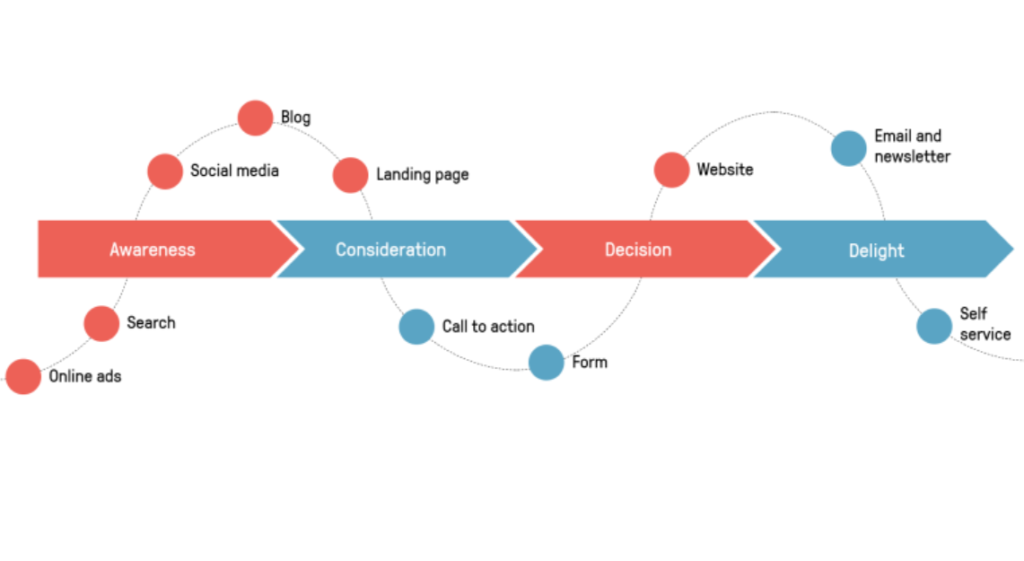Improving customer experience (CX) is akin to crafting a journey that is not only satisfying but also delightfully memorable for your customers. In today’s competitive landscape, offering a standout CX can significantly differentiate your brand, foster loyalty, and drive business growth. Here’s a comprehensive guide on enhancing customer experience, ensuring every interaction with your brand is positive and impactful.
Understand Your Customers
Develop Customer Personas
Begin by creating detailed customer personas. These semi-fictional characters represent your ideal customers, based on real data and educated assumptions about customer demographics, behavior patterns, motivations, and goals. Understanding who your customers are allows you to tailor experiences that resonate deeply with them. Effective personas incorporate insights from various sources, including market research, customer surveys, and social media analysis.
Collect and Analyse Feedback
Regularly collect feedback through surveys, social media, customer interviews, and other channels. Analyse this feedback to identify patterns and areas for improvement. Utilising tools like Net Promoter Score (NPS) surveys, Customer Satisfaction (CSAT) scores, and Customer Effort Score (CES) helps quantify customer sentiment and identify specific pain points. Listening to your customers not only aids in addressing their needs but also makes them feel valued and understood.
Personalise the Experience
Leverage Data for Personalisation
Use customer data to personalise interactions across all touchpoints. Personalisation can range from addressing the customer by name in emails to recommending products based on past purchases or browsing behaviour. Advanced analytics and machine learning algorithms can help predict customer preferences and behaviour, enabling a more tailored experience. A personalised experience shows customers that you pay attention to their preferences and value their business.
Segment Your Audience
Audience segmentation allows you to deliver more relevant content, offers, and communication to different groups of customers. Segmenting your audience based on criteria such as behaviour, demographics, or purchase history enables you to tailor your messaging and offers, improving engagement and satisfaction. For example, segmenting by purchase history allows you to create targeted marketing campaigns for repeat customers versus first-time buyers, increasing the relevance and effectiveness of your outreach.

Invest in a Seamless Omnichannel Experience
Ensure Consistency Across Channels
Customers interact with your brand across multiple channels (e.g., website, social media, in-store). Ensuring a consistent and seamless experience across all these channels is crucial. Consistency in messaging, branding, and quality of interaction helps build trust and reinforces your brand identity.
Make Information Accessible
Ensure that customers can easily find information and complete tasks regardless of the channel they choose. This might mean optimising your website for mobile use, offering a comprehensive FAQ section, or ensuring your customer service team is easily reachable through various means. Implementing chatbots and AI-driven customer support solutions can also enhance accessibility, providing instant responses and 24/7 assistance.
Enhance Digital Experience
Optimise Your Website
Your website is often the first point of interaction with your brand. Ensure it’s intuitive, fast, and mobile-friendly. Easy navigation, quick load times, and clear calls-to-action (CTAs) can significantly enhance the customer’s digital experience. Conduct regular usability testing and use tools like heatmaps and session recordings to understand user behaviour and identify areas for improvement.

Implement Self-Service Options
Many customers prefer solving issues on their own. Offering robust self-service options such as a knowledge base, FAQs, or self-checkout can improve customer satisfaction by giving them control over their experiences. Ensure these resources are comprehensive and easy to navigate. Additionally, incorporating AI-driven search functions can help users quickly find the information they need.
Leverage Technology for Enhanced CX
Utilise Artificial Intelligence and Machine Learning
Artificial Intelligence (AI) and Machine Learning (ML) can transform customer experience by providing deeper insights and automating tasks. Implement AI-driven chatbots for instant customer support, use ML algorithms to analyse customer behaviour and predict trends, and deploy personalisation engines that recommend products or content based on user preferences. These technologies can help scale personalised experiences and improve efficiency.
Implement Customer Relationship Management (CRM) Systems
CRM systems are essential for managing customer interactions and data throughout the customer lifecycle. They provide a centralised platform for tracking customer interactions, sales, and service issues. By integrating CRM with other tools such as marketing automation and analytics platforms, businesses can gain a holistic view of their customers, streamline processes, and deliver more personalised experiences.
Empower Your Customer Service Team
Provide Comprehensive Training
A well-trained customer service team is essential for delivering excellent customer experiences. Provide ongoing training to ensure your team is knowledgeable about your products, services, and customer service best practices. Training should also focus on soft skills such as empathy, active listening, and problem-solving.
Equip with the Right Tools
Equip your customer service team with the tools they need to provide efficient and effective support. This includes customer relationship management (CRM) systems, chat and messaging platforms, and access to comprehensive customer data. Empowering your team with the right tools enables them to resolve issues more quickly and effectively, leading to higher customer satisfaction.
Measuring and Analysing CX
Define Key Performance Indicators (KPIs) for CX
Establish clear KPIs to measure the effectiveness of your CX initiatives. Common KPIs include Customer Satisfaction Score (CSAT), Net Promoter Score (NPS), Customer Effort Score (CES), and customer retention rates. Defining these metrics helps in setting benchmarks and measuring progress.
Utilise Customer Journey Analytics

Customer journey analytics involve tracking and analysing every touchpoint a customer has with your brand. By understanding the entire customer journey, from awareness to post-purchase, you can identify friction points and opportunities for improvement. Use journey mapping tools to visualise customer paths and optimise each stage of the journey.
Continuously Improve Based on Feedback
Implement a Continuous Feedback Loop
Adopt a continuous improvement mindset. Regularly collect and analyse customer feedback to identify areas for improvement. Implement changes based on this feedback and monitor how these changes affect customer satisfaction. Utilise closed-loop feedback systems to ensure that customer concerns are addressed and that improvements are communicated back to customers.
Celebrate Successes and Learn from Mistakes
Recognise when things go well and analyse why they worked. Similarly, when mistakes happen, view them as learning opportunities. Sharing these learnings across the organisation can help prevent future issues and improve overall customer experience. Implement a culture of continuous improvement where feedback is welcomed and acted upon.
Creating a Customer-Centric Culture
Empower Employees to Deliver Great CX
Creating a customer-centric culture starts with your employees. Encourage a culture where every team member understands the importance of customer experience and their role in delivering it. Provide training and resources to empower employees to solve customer problems effectively and foster a service-oriented mindset.
Align Organisational Goals with Customer Needs
Ensure that your organisational goals and strategies are aligned with customer needs. This alignment requires leadership commitment and a clear understanding of how every department contributes to the customer experience. Regularly review and adjust strategies based on customer feedback and market changes to stay relevant and customer-focused.

Improving customer experience is an ongoing journey that requires commitment, creativity, and a customer-centric mindset. By understanding your customers, personalising their experience, ensuring seamless interactions across channels, empowering your customer service team, and continuously adapting based on feedback, you can create a customer experience that not only meets but exceeds expectations. Remember, the ultimate goal is to make every customer feel valued, understood, and delighted with every interaction they have with your brand. Investing in CX is investing in the long-term success and growth of your business.


